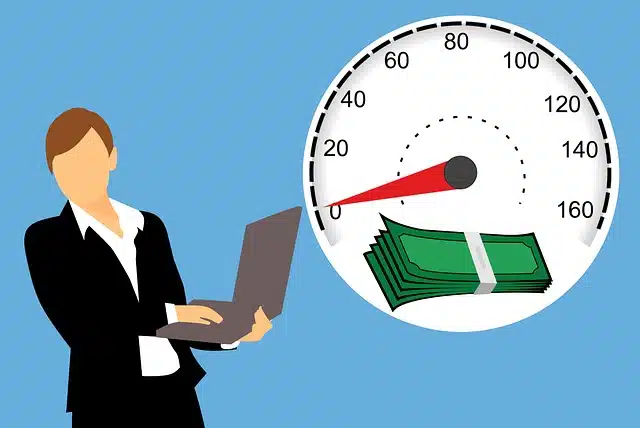How are Dividends Taxed in Canada – Dividend Tax Credit Explained
Dividend taxation here in Canada is often a tricky subject. The dividend gross up can look, on the surface, to actually be an “unfair” tax treatment when in reality it is of huge benefit to Canadian investors, especially those in lower tax brackets.
In this article, we will look at how dividends are taxed in Canada and investigate the dividend tax credit so you can decide for yourself if you’d like to take advantage of the huge tax benefits that buying Canadian stocks that pay dividends can get you.
How are dividends taxed in Canada?
Canadian tax payers who choose to invest in Canadian dividend stocks are given preferential tax treatment.
This is because dividends paid by Canadian corporations are often eligible for the dividend tax credit.
To get into exact figures and examples, we first need to understand what the dividend tax credit is.
A quick note however. This applies to Canadian dividend stocks held outside of a registered account like an RRSP or TFSA. Because you are not taxed on dividends received in these accounts, the dividend tax credit does not apply.
What is the dividend tax credit in Canada?
The dividend tax credit is a dollar figure that you can use against your taxes payable on the “grossed-up” portion of dividends received from a Canadian company.
You might have noticed that I have been repeating Canadian a lot. This is because the dividend tax credit does not apply to foreign dividends, US stocks being an example. But we will speak more on that later.
The dividend gross-up and dividend tax credit is used to make sure that dividends are not subject to double taxation. The corporation is paying you dividends with after tax profits, so for your dividends to be taxed in Canada at full rates would be unfair.
First, lets look at what the dividend gross up is. And bear with me over the course of this article. It can seem very confusing as to what is going on, but the examples will clear everything up.
What is dividend gross up?
The end goal of dividend gross up is to bring the dividend amount back up to the dividend the corporation would have issued you had it not paid any tax.
Again, this is because dividends are paid with after tax income from the corporation.
Both eligible and non-eligible dividends are grossed up, but to a different percentage. If you’re wondering whether or not the dividends you receive are eligible or non-eligible, don’t fear.
According to the Canadian Income Tax Act, firms must designate and notify shareholders that its dividend is ‘eligible’ prior to the dividend being paid. In other words, it is the corporation itself that declares eligibility, it isn’t on the back of the shareholders to determine
We won’t go too in-depth on the differences, but to define eligible vs non eligible dividends in a single sentence, the corporation pays less taxes on non eligible dividends, and as a result you are entitled to less tax credits. This will make a lot more sense down below, so just keep reading.
As of 2021, the dividend gross up percentages are as follows:
- Eligible dividends: 38%
- Non-eligible dividends: 15%
Calculating your dividend gross-up income
Lets assume we have 2 situations. One in which you receive $1000 in eligible dividends, and the other in which you receive $1000 in non-eligible dividends. Lets calculate your gross-up dividend income that you’ll report on line 12000 of your tax return:
- Eligible dividend situation: $1000 X 1.38 = $1380
- Non-eligible dividend situation: $1000 X 1.15 = $1150
Calculating your dividend tax credit
Now, you might be sitting there thinking
“Wait, I’ve received a $1000 dividend but I’m taxed on $1380?! That’s completely unfair”
However, we aren’t done yet. We now need to calculate your dividend tax credit based off these grossed-up figures. For this, lets refer to the table below to figure out both our federal and provincial dividend tax credit for 2021. Keep in mind, this table refers to eligible dividends only. Federally, the dividend tax credit on non-eligible dividends is 9.031%.
2021 Eligible Dividend Federal and Provincial Dividend Tax Credit
| Gross-Up | Federal | ON | SK | AB | BC | MB | QC | NB | NL | NS | PE | NT | NU | YT |
|---|---|---|---|---|---|---|---|---|---|---|---|---|---|---|
| 38% | 15.0198% | 10% | 11% | 8.12% | 12% | 8% | 11.70% | 14% | 5.4% | 8.85% | 10.5% | 11.5% | 5.51% | 12.02% |
So, for the purposes of this example we’ll assume we live in Alberta. We can see that our dividend tax credit is as follows:
- Federal dividend tax credit: 15.0198% of $1380 = $207.27
- Provincial dividend tax credit: 8.12% of $1380 = $112.06
This tax credit can then be applied to your overall dividend income, and after the tax credits are applied, the remaining income will be taxed at your nominal tax rate.
An in-depth example of the dividend tax credit in action
It’s very likely all of this is still confusing to you. So, lets go over an in-depth example so you have a full understanding of the dividend tax credit, dividend gross up and overall how dividends are taxed in Canada.
John has received a total of $1000 in dividends, $800 of them being eligible, and $200 of them being non eligible. Lets assume John is in a high tax bracket, with his nominal tax rate being 30%.
First, lets gross up the dividends, to get our total taxable income.
- $800 X 1.38 = $1104
- $200 X 1.15 = $230
- Total taxable income = $1334
With John being in the highest tax bracket, he will pay 30% on this grossed up dividend income, or $400.20.
However, we have not applied his dividend tax credit yet. For this example, we’ll figure out his federal dividend tax credit. And if you missed the note on non eligible dividends above, the federal dividend tax credit on them is 9.031%.
- 15.0198% of $1104 is $165.81
- 9.031% of $230 is $20.77
- $165.81 + $20.77 = total dividend tax credit of $186.58
Now, where a lot of people will get confused as to how this is beneficial is when applying the dividend tax credit. It is key to note that the dividend tax credit is applied to your taxes payable on the grossed up amount, not your total taxable income.
So where many will go wrong, is they’ll take the $186.58 and apply it to John’s $1334 in total taxable income, and then determine taxes paid. But what you need to do, is take this $186.58 and apply it to Johns taxes due on that total income, which as we calculated is $400.20
So in the end, you end up with John paying
$400.20 – $186.58 = $213.62 in total taxes on $1000 in dividends received, for a total of 21.36%.
Lower income earnings benefit more from the dividend tax credit
Lets assume all of the conditions above stay true, but we change one thing. John now has a 18% nominal tax rate instead of 30%.
On John’s total grossed up income, he’ll pay 18% of $1334, or $240.12 in taxes on his dividend income.
However, his dividend tax credit doesn’t change. So, he still qualifies for $186.58 in dividend tax credits. So, his total taxes paid are:
$240.12 – $186.58 = $53.54 in total taxes on $1000 in dividends received, for a total of 5.35%.
Both of these examples should show you how the dividend tax credit saves you money
The dividend gross up is very confusing at first. We’re left wondering why we are marking up our dividends.
However, when you look at these two examples, you can see that how dividends are taxed in Canada is actually beneficial to most investors, especially if you’re in a lower tax bracket.
And keep in mind, those tax credits listed above don’t even include the dividend tax credits given on a provincial level, which can reduce your tax liability even further.
Dividend tax credit on foreign dividends
It is important to note, that foreign dividends, originating from firms outside the country are NOT eligible for the dividend tax credit.
Make sure you are aware of this when you are buying your stocks.
Likewise, most foreign dividends are subject to a withholding tax, which varies by country. A discussion with an accountant would be wise to determine your exact taxation in this department.
How dividends are taxed in Canada vs capital gains
Dividends are taxed at a rate in Canada that is not as efficient as capital gains. However, both still provide excellent taxable benefits.
On $1000 in dividends, we can see that John from the example above at a 30% tax rate paid $213.62 in taxes on a federal level.
On a $1000 capital gain, John will be taxed on half of the capital gain at his full tax rate.
30% of $500 is $150.
So, John would end up paying less tax on his capital gain than he would his dividend income.
How dividends are taxed in Canada vs interest income
Interest income is fully taxable in Canada, and is actually one of the most inefficient forms of income from a tax perspective.
If we use the exact same example above, if John received $1000 in dividends and had a 30% tax rate, he would pay $213.62 in taxes after we apply the dividend tax credit.
However, if John were to have $1000 in interest income, he is taxed on 100% of that income.
This means that John will pay $300 in taxes on $1000 in interest income received.
Dividends from Real Estate Investment Trusts
Many automatically assume that a payment made from a REIT is a “dividend.” But, this is more often than not just a generic name that is placed on income received from an investment.
What REITs really offer is a distribution, which is very different from a dividend. In fact, a distribution can contain return of capital, interest, capital gains, dividends and other income. All of which can be taxed at different rates.
So, for this reason it may be a good idea to hold REITs inside of a registered account, so you don’t have to deal with the tax implications.


